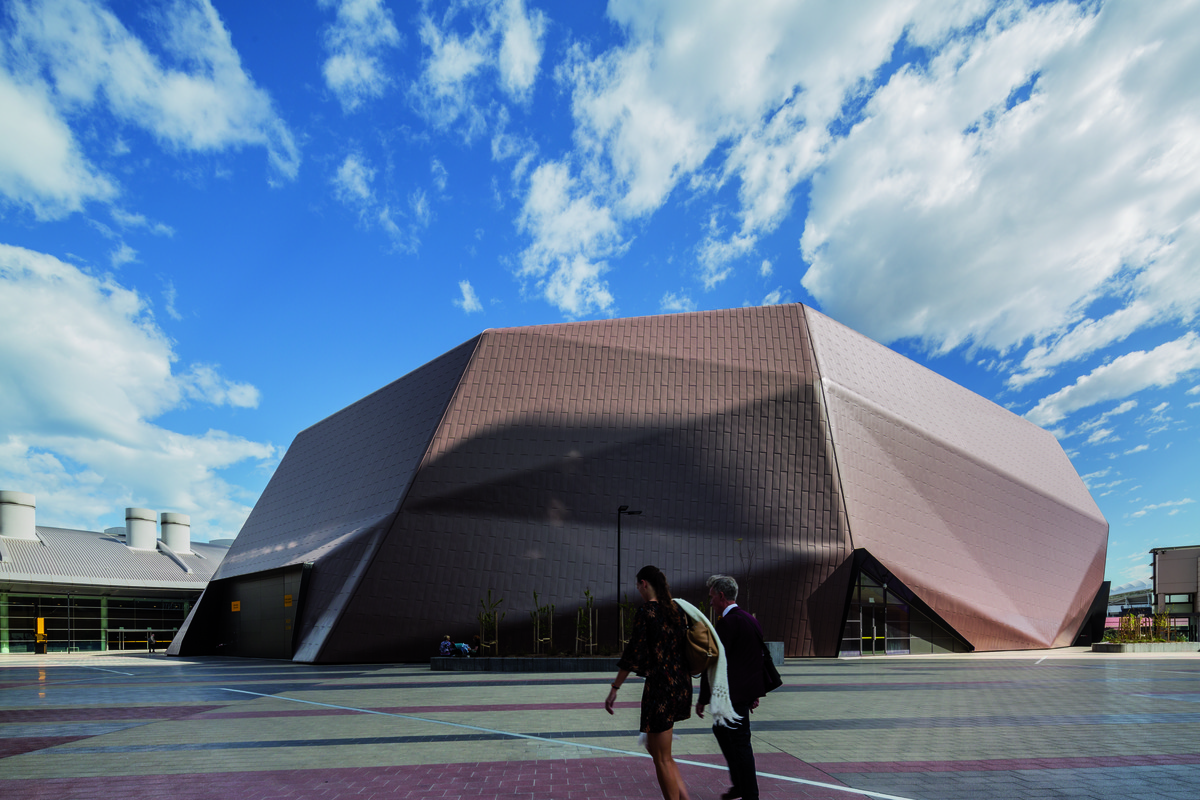
The design for Adelaide Convention Centre has taken cues from its environment, referencing the geological forms of South Australia. Not only does it effectively respond to its context, but it has also become part of a wider place-making strategy.
The redevelopment of the convention centre includes two new buildings on either side of the existing Convention Centre hall. Adjacent to business, cultural, medical research and entertainment precincts, the centre has been positioned to showcase Adelaide’s iconic riverbank and parklands.
The narrative of the new building celebrates a sense of place by creating a memorable guest experience, according to Woods Bagot director Thomas Masullo.
“Adelaide’s advantage in the conference and events sphere required a centre that marries the experience of the state with the talent of the city,” says Masullo.
“Together the ensemble of buildings complete a visitor experience that is completely South Australian – dramatic, creative and authentic.”
The building incorporates a number of internal moving parts to maximise the flexibility of the facility, and provide different sizes and configurations of meeting space. Features include operable walls, two 300-seat auditoriums on turntables and tired seating that when lifted, reveals a flat floor capable of catering to exhibition or banquet mode events.
Engineered and built in Australia, the centre’s rotating theatres are a first of their kind in the region, according to Woods Bagot. Combined with hinged seating bays, dividing walls and demountable meeting rooms, the innovation delivered in the East building has enabled a highly adaptable and transformative facility, says the firm.
According to Woods Bagot senior associate Simon Tothill, the design showcases a landscape formed over half a billion years.
“While the West building was inspired by the dramatic geology and colours of the nearby Flinders Ranges, the weathered organic shape of the new East building reflects the weathered contours of the Remarkable Rocks on Kangaroo Island.”

The zinc cladding that wraps the form of the East building was refined in a façade system developed for this project in South Australia. With a concept derived from the cross-section of a South Australian rock that opens to reveal its inner beauty and character, the tactile interior form is in contrast to the smooth, weathered exterior.
Sustainability was also a priority in the design, and was implemented through complex fluid dynamic modelling and clever energy management systems combined with state-of-the-art smart LED lighting systems, delivering a building with 27 percent lower energy consumption that the original building.

